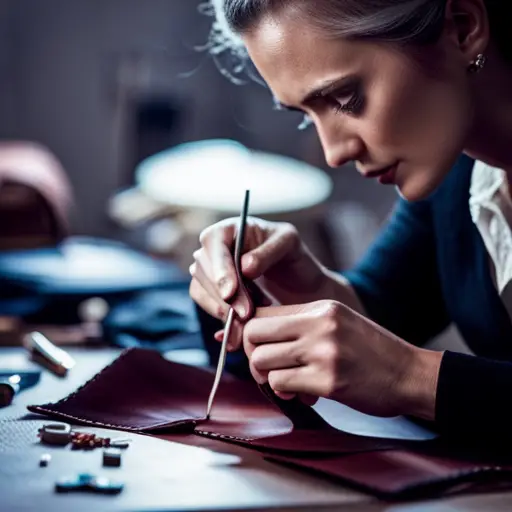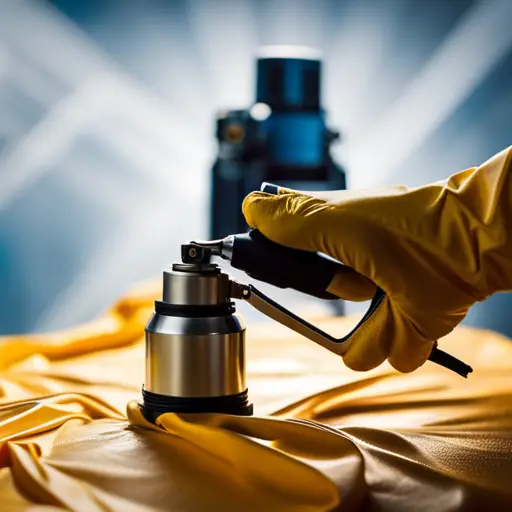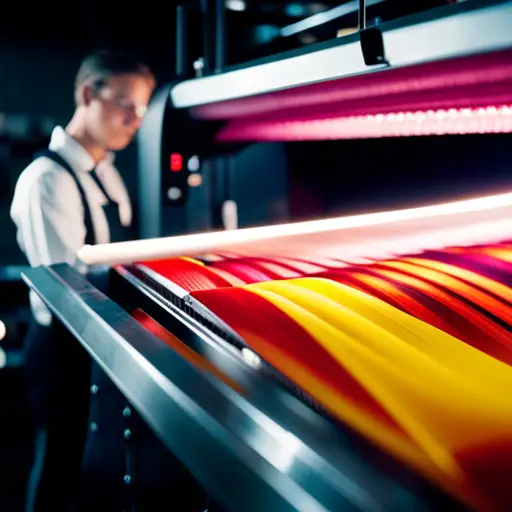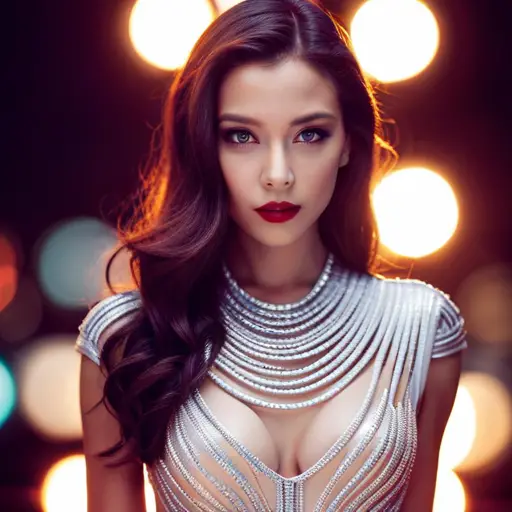Advanced Draping Techniques for Complex Costumes
Did you know that advanced draping techniques can turn a simple piece of fabric into a breathtaking, complex costume?
Mastering the art of draping can elevate your costume design skills to new heights, allowing you to create intricate bodices, sleeves, and collars that truly stand out.
In this article, we will explore the essential tools, fabric properties, and advanced draping techniques that will take your costume creations to the next level.
Essential Tools for Advanced Draping
When draping complex costumes, having the essential tools is crucial for achieving precision and accuracy in the design process. Fabric manipulation and pattern drafting are two key aspects of advanced draping.
Fabric manipulation tools like draping tape, draping canvas, and fabric weights are essential for creating intricate folds, pleats, and gathers. These tools help in shaping the fabric to achieve the desired silhouette and drape.
Pattern drafting tools such as rulers, curves, and grading tools are necessary for creating accurate and customized patterns that will be used as the foundation for draping the fabric.
In addition to these tools, a dress form or mannequin is indispensable for draping complex costumes. It provides a three-dimensional representation of the human body, allowing designers to drape fabric directly on the form to visualize how the costume will look and fit.
Furthermore, specialized pins and markers aid in securing and marking the fabric during the draping process, ensuring precision and consistency in the design.
Understanding how fabric behaves and responds to manipulation is essential for achieving the desired drape and structure in costumes. Therefore, the next crucial step is to delve into understanding fabric properties and how they influence draping techniques.
Understanding Fabric Properties
An understanding of fabric properties is essential for mastering advanced draping techniques for complex costumes. Fabric drape, the way a fabric hangs and falls, is a crucial factor in achieving the desired silhouette and movement in costume design. Different fabrics possess unique drape characteristics, such as fluidity, stiffness, or elasticity, which directly impact the outcome of draped garments. Understanding these properties allows costume designers to predict how a fabric will behave when manipulated, folded, or pleated, enabling them to make informed decisions during the draping process.
Fabric manipulation techniques, such as gathering, tucking, and pleating, rely heavily on an in-depth comprehension of fabric properties. For instance, a lightweight, flowy fabric may be more suitable for creating soft, ethereal gathers, while a structured, heavyweight fabric could be better suited for creating sharp, defined pleats. Moreover, understanding how different fabrics respond to manipulation techniques can inspire creativity and innovation in costume design, leading to the development of unique and intricate draped designs.
As we delve into the advanced draping techniques for bodices, this understanding of fabric properties will prove invaluable in achieving impeccable results.
Advanced Draping Techniques for Bodices
Building upon the understanding of fabric properties discussed in the previous subtopic, a key aspect of mastering advanced draping techniques for complex costumes involves implementing precise fabric manipulation methods to create intricately draped bodices. When it comes to bodice draping, techniques such as bias draping and sculptural draping are essential for achieving a custom fit and couture details.
| Draping Techniques | Description | Benefits |
|---|---|---|
| Bias Draping | Involves draping fabric diagonally across the grain line, allowing for natural stretch and drape. | Creates a form-fitting silhouette and adds fluidity to the bodice. |
| Sculptural Draping | Focuses on creating three-dimensional shapes and intricate folds in the fabric. | Adds depth and dimension to the bodice, resulting in visually striking designs. |
| Custom Fit | Tailoring the draping to the individual’s body shape and measurements. | Ensures a precise and flattering fit, enhancing the overall aesthetic of the costume. |
| Couture Details | Incorporating intricate embellishments and finishing techniques into the draping. | Elevates the bodice with high-end, luxurious elements, showcasing meticulous craftsmanship. |
| Fabric Manipulation | Utilizing various techniques to manipulate the fabric, such as pleating, gathering, and folding. | Allows for artistic expression and unique textural effects, contributing to the complexity of the bodice design. |
Mastering these advanced draping techniques for bodices is essential for creating visually stunning and structurally sound costumes, elevating the art of costume design to new heights.
Draping Intricate Sleeves and Collars
Continuing with a focus on the advanced draping techniques for complex costumes, the intricacy of sleeves and collars necessitates a mastery of fabric manipulation and sculptural draping. When it comes to sleeve construction and collar shaping, attention to detail and precision are paramount.
Here are some key points to consider when draping intricate sleeves and collars:
-
Sleeve Construction:
-
Gathering and Pleating: Utilize techniques such as gathering and pleating to create volume and dimension in sleeves, adding dramatic flair to the overall garment.
-
Layering and Tapering: Experiment with layering fabrics and tapering the sleeve silhouette to achieve a structured and dynamic look, enhancing the visual impact of the costume.
-
Collar Shaping:
-
Origami-inspired Techniques: Explore origami-inspired techniques to sculpt unique collar shapes, allowing for innovative and unconventional design possibilities.
-
Embellishments and Trims: Incorporate embellishments and trims strategically to accentuate collar details, elevating the overall aesthetic of the costume.
Mastering the art of draping intricate sleeves and collars opens up a world of creative possibilities, allowing costume designers to push the boundaries of traditional garment construction.
Finishing Touches and Embellishments
The intricate sleeves and collars discussed previously can be elevated through meticulous attention to finishing touches and strategic embellishments, adding depth and sophistication to the overall costume design. When considering finishing touches, embroidery techniques play a pivotal role in enhancing the visual appeal of costume designs.
Intricate embroidery can be employed to accent key elements such as cuffs, collars, and hems, infusing the costume with an air of opulence and grandeur. Various embroidery techniques such as satin stitch, chain stitch, and appliqué can be utilized to create stunning visual effects, elevating the overall aesthetic of the costume.
In addition to embroidery, beading options offer a myriad of possibilities for adding luxurious embellishments. Delicate seed beads, sparkling crystals, and lustrous pearls can be meticulously hand-sewn onto the costume to create mesmerizing patterns and textures. Whether it’s a subtle hint of shimmer or an extravagant display of ornamentation, beading can bring a unique dimension to the costume, catching the light and captivating the audience.
Frequently Asked Questions
How Can Advanced Draping Techniques Be Adapted for Costumes With Unusual or Non-Traditional Silhouettes?
Adapting unconventional silhouettes in costume draping involves understanding the garment’s structural elements. Incorporating unique elements like wire, padding, or unconventional fabrics can help achieve the desired shape while maintaining the integrity of the design.
Are There Specific Fabric Properties That Are Particularly Challenging to Work With When Using Advanced Draping Techniques for Complex Costumes?
Working with challenging fabrics, such as sheer or heavyweight materials, presents unique hurdles when adapting advanced draping techniques for non-traditional silhouettes. Understanding the behavior of these fabrics is essential for achieving desired results.
What Are Some Tips for Incorporating Structural Elements Like Boning or Interfacing Into Draped Bodices for Added Support?
When incorporating structural support into draped bodices, consider innovative draping techniques that seamlessly integrate boning or interfacing. This ensures added support without compromising the fluidity and elegance of the garment’s silhouette.
Can Advanced Draping Techniques Be Used to Create Unique or Unconventional Sleeve and Collar Designs for Costumes?
While advanced draping techniques are often associated with creating unique sleeve construction and collar manipulation, they can also offer a surprising twist to traditional costume design. The intricate art of draping allows for endless creativity.
What Are Some Innovative Ways to Incorporate Embellishments Like Beading, Embroidery, or Appliques Into Draped Costumes for a More Intricate and Detailed Finish?
Innovative embellishment techniques can elevate the intricate art of complex costume draping. Incorporating beading, embroidery, and appliques into draped costumes allows for a more detailed and visually stunning finish, adding depth and richness to the overall design.
Conclusion
In conclusion, mastering advanced draping techniques is essential for creating intricate and complex costumes. By understanding fabric properties and utilizing the right tools, one can achieve stunning results in bodices, sleeves, and collars.
The finishing touches and embellishments add the final flourish to the costume, elevating it to a masterpiece. With dedication and practice, one can become a true draping virtuoso, creating costumes that are truly a work of art.




